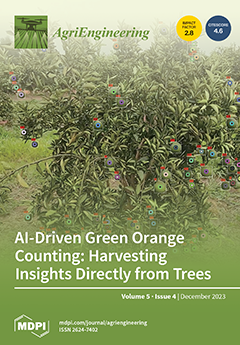The effects of pulsed electric field treatment and thermal pasteurization on the microbial and physical properties of a high-fiber, nutritional milk-based beverage made with date powder were studied. Four ratios of date powder (10, 15, 20, and 25
w/
w) were added to the milk, which was then kept at 5 °C for 6 days for the thermal pasteurization and the control treatments. The pulsed electric field treatment had three levels of pulses (20, 50, and 80 pulses) and four ratios of date powder, 10, 15, 20, and 25% (
w/
w), and then kept at 5 °C for 6 days. The samples were evaluated for the pH, total soluble solids (TSS), total color difference (Δ
E), and total viable count (TVC) during their shelf life. The pH values of the beverages in the control treatment were 5.58, 5.45, 5.33, and 5.29 and 6.68, 6.48, 6.26, and 5.87 in the thermal treatment after 6 days, with powder ratios of 10, 15, 20, and 25% (
w/
w), respectively. The pH values of the beverages in the pulsed electric field treatment were 6.8, 6.64, 6.56, and 6.28 at 80 pulses after 6 days, with powder ratios of 10, 15, 20, and 25% (
w/
w), respectively. The TVCs in the control treatment were 6.2, 5.44, 4.5, and 3.94 log10 CFU/mL and 4.02, 3.92, 3.54, and 3.31 log10 CFU/mL in the thermal treatment after 6 days, with powder ratios of 10, 15, 20, and 25% (
w/
w), respectively. The TVCs of the beverages in the pulsed electric field treatment were 1.53, 1.11, 0.665, and 0.511 log10 CFU/mL at 80 pulses after 6 days, with powder ratios of 10, 15, 20, and 25% (
w/
w), respectively. This shows that following treatment with a pulsed electric field at 80 pulses, a milk-based drink with date powder and no preservatives can be kept at 5 °C for up to 6 days.
Full article





